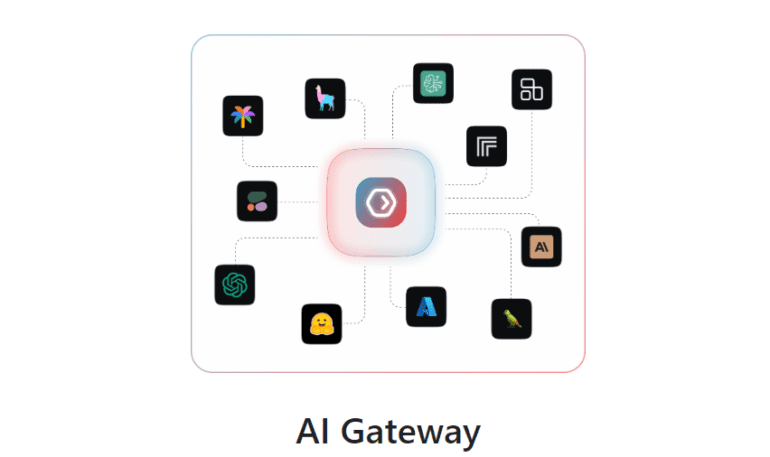TL;DR:
- AI Gateway simplifies working with diverse AI models through a fast and universal API.
- It solves challenges related to managing varying API signatures, preventing bottlenecks, and handling errors.
- Load balancing across multiple API keys and providers becomes automated, ensuring optimal performance.
- Gateway’s standout feature is its graceful error handling with fallbacks and automatic retries.
- Developers can enhance its functionality with custom middleware functions.
- Gateway’s reliability is proven by handling over 100 billion tokens in real-world scenarios.
Main AI News:
In the realm of artificial intelligence (AI), developers often grapple with the complexities of managing multiple models efficiently. The challenge lies in navigating a landscape of diverse API signatures, alleviating bottlenecks, and fortifying resilience against errors. This intricate web of intricacies can impede the progress of large-scale AI projects, demanding a more streamlined and convenient approach.
While some solutions attempt to address these challenges, they often come with their own limitations. Diverse API signatures among models can hinder the creation of a unified framework, and the manual load balancing of multiple API keys and providers proves time-consuming, necessitating automation for optimal performance. Moreover, the absence of robust fallback mechanisms and seamless failovers can disrupt the seamless flow of AI applications.
Enter Gateway—an open-source solution that redefines the AI landscape with its fast and user-friendly API. Designed with developers in mind, Gateway offers a universal API that effortlessly connects with a wide array of models, irrespective of their distinct API signatures. Load balancing becomes a breeze as Gateway seamlessly disperses requests across multiple API keys and providers, mitigating the risk of bottlenecks and ensuring a smoother workflow.
Gateway’s standout feature lies in its ability to handle errors gracefully, employing fallbacks and automatic retries. In the event of a failure with a specific provider or model, Gateway seamlessly transitions to alternative options, bolstering the system’s overall resilience. The tool incorporates automatic exponential backoff retry logic, continuously learning from errors and adapting to deliver ever-reliable performance.
What sets Gateway apart is its adaptability, allowing developers to enhance its functionality by integrating custom middleware functions. This flexibility enables tailored adjustments to cater to specific application requirements. Having undergone rigorous testing, Gateway has proven its mettle by handling over 100 billion tokens in real-world scenarios. Its battle-tested reliability instills confidence in developers, assuring them of Gateway’s effectiveness in large-scale AI applications.
Conclusion:
AI Gateway’s introduction signifies a major leap in the AI market. Its ability to streamline integration with diverse language models, tackle error handling, and offer customization options empowers developers, paving the way for more efficient and resilient AI applications. This innovation is poised to drive significant growth and adoption in the AI industry.

